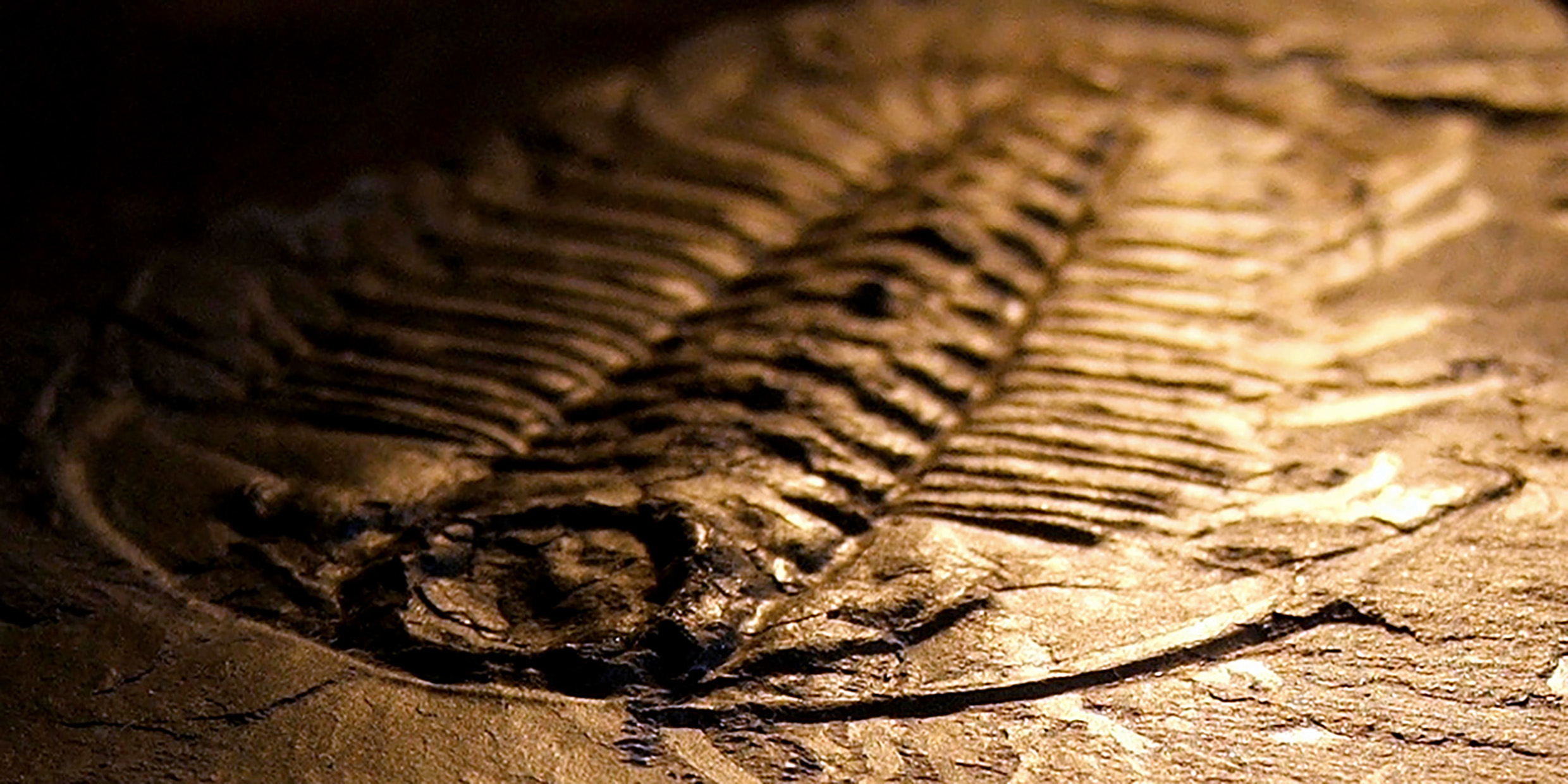Originally published 26 June 2005
For the first four billion years of Earth history, life was amebic and microscopic. Then, about 600 million years ago, with surprising swiftness, a myriad of multicellular organisms appear in the fossil record, in what has been called the Cambrian Explosion.
This new diversity of life is beautifully preserved in fine-grained mudstones of Western Canada called the Burgess Shale. Here are creatures with ancestral similarities to present animals — jellyfish and sponges, for example — but also a teeming menagerie of weird animals whose lineages were destined for extinction.
The late great evolutionist Stephen Jay Gould looked at the Burgess Shale and saw a record of contingency and chance. In a book called Wonderful Life: The Burgess Shale and the Nature of History (1989), he argued that evolution is a crap shoot, not so much the survival of the fittest as the survival of the luckiest.
Play the tape of history again, said Gould, and the outcome would almost certainly be different. You and I might not be here.
Simon Conway Morris, an expert on the Burgess Shale, looks at the same fossils and draws a different conclusion. In The Crucible of Creation: The Burgess Shale and the Rise of Animals (1998), he attempts to show that environmental pressures drive evolution in a predictable direction.
Yes, there is a certain diciness, says Morris, but when one creature succumbs to caprice — an asteroid impact, say, or climate change — another will evolve to fill the vacated niche. Convergence — the tendency of remotely related lineages to evolve along similar lines — is a powerful a force in evolution, he says, and convergence leads inevitably to something very like us.
Morris upped the ante and gave the story a religious twist with his more recent book, Life’s Solution: Inevitable Humans in a Lonely Universe (2003). Billions of years of evolution were reaching in our direction, he suggests: “The evolutionary routes are many, but the destinations are limited.”
Contingency vs. inevitability. The roll of the dice vs. something very like a divine plan. Two views of history by two brilliant scientists drawing their conclusions from the same scientific data. One view makes human life a fluke, the other places humanity at the pinnacle of a grand unfolding.
No doubt the truth lies somewhere in between. Evolution is not, as creationists mockingly suggest, a thousand monkeys banging away at typewriters and coming up with the works of Shakespeare. Nor is it the familiar sequence of creatures crawling onto the shore, then turning step by step into modern humans — an image Gould loved to poke fun at.
The power — and beauty — of the neo-Darwinian synthesis is the way it incorporates both chance and law. We may not be the inevitable apple of the Creator’s eye, but intelligent creatures such as ourselves may indeed have been a likely outcome of organic evolution. After all, big brains, self-awareness, toolmaking and science have enormous survival value in a chancy universe.
All of this has relevance to how we respond to the present environmental crisis. If history is a crap shoot, there’s not much any one of us can do to nudge it one way or the other. And if history is predetermined, we might as well all set back and wait for the inevitable unfolding, whatever it is.
But if the truth falls somewhere between “anything goes” and the apotheosis of humankind — and that is where lies the nexus of science and spirit — then our actions have consequences.
To the extent that history depends on the roll of the dice, we can be smart enough to load the dice to the planet’s advantage. And if, as Morris implies, there is a direction to history which places humans in a special redemptive role, we can assume that role with gusto and act it to the hilt.



